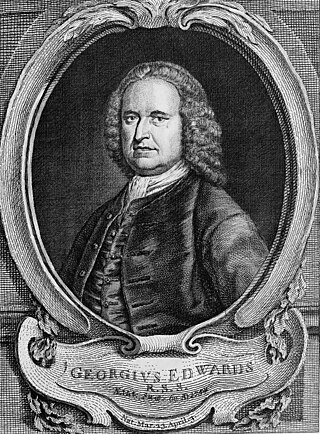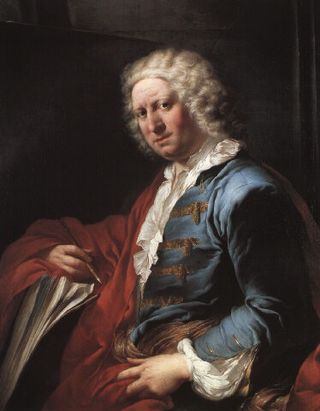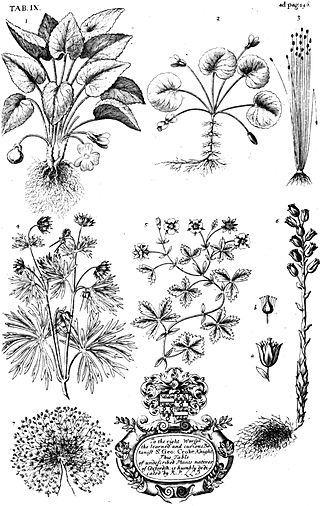
George Vertue was an English engraver and antiquary, whose notebooks on British art of the first half of the 18th century are a valuable source for the period.

George Edwards was an English naturalist and ornithologist, known as the "father of British ornithology".

Giovanni Paolo, also known as Gian Paolo Panini or Pannini, was an Italian painter and architect who worked in Rome and is primarily known as one of the vedutisti. As a painter, Panini is best known for his vistas of Rome, in which he took a particular interest in the city's antiquities. Among his most famous works are his view of the interior of the Pantheon, and his vedute—paintings of picture galleries containing views of Rome. Most of his works, especially those of ruins, have a fanciful and unreal embellishment characteristic of capriccio themes. In this they resemble the capricci of Marco Ricci. Panini also painted portraits, including one of Pope Benedict XIV.

Michael Burghers was a Dutch illustrator and artist of the 17th century, who spent most of his career in England. He was commissioned to create maps, estate plans, and illustrations of stately houses, by the English aristocracy.

Henry Anderton was an English painter, mainly known for his portraits.
Bernard Baron was a French engraver and etcher who spent much of his life in England.

Charles Benazech was an English portrait and historical painter, and aquatint engraver. Prints of his painting of Louis XVI and family, just before the monarch's execution during the French Revolution, achieved a wide circulation.
François Boitard was a French Baroque artist.
John Baptist Chatelain (1710–1758) was an English draughtsman and engraver of French background, specialized in landscapes.

Peter Vanderbank or Vandrebanc (1649–1697) was a French-English engraver.

Charles François Hutin was a French history and figure painter, engraver and sculptor. He became director of the Royal Academy of Arts in Dresden.
Paul Fourdrinier, sometimes referred to as Peter or Pierre Fourdrinier, was an 18th-century engraver in England.

Thomas Worlidge (1700−1766) was an English painter and etcher.

François Vivares was a French landscape-engraver, active in England.

Henry Fletcher, was an English engraver.
John Savage was an engraver and printseller in London.

Sir Robert Strange was a Scottish engraver. A Jacobite, he spent periods out of Great Britain, but was eventually reconciled to the Hanoverian succession and was knighted by George III.
Nicholas Blakey was an Irish-born draughtsman and engraver. He produced book illustrations, and designed early examples of scenes from English history.
Benjamin Thomas Pouncy was an English draughtsman and engraver.
Antoine Benoist was a French draughtsman and engraver, who spent much of his working life in London, and was known as Anthony Benoist.












